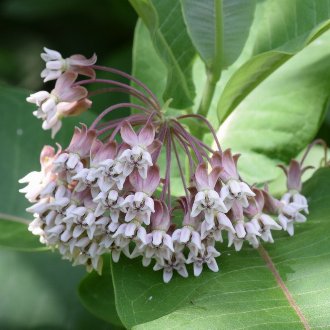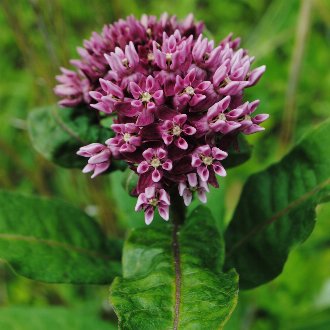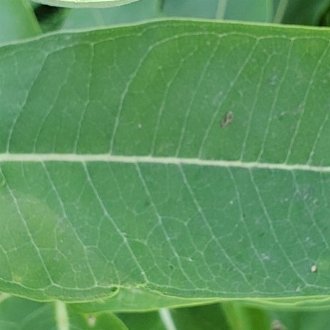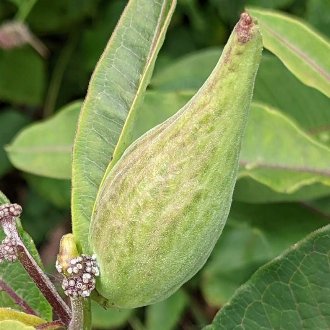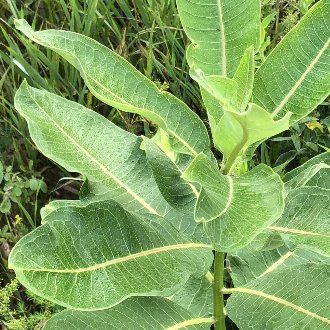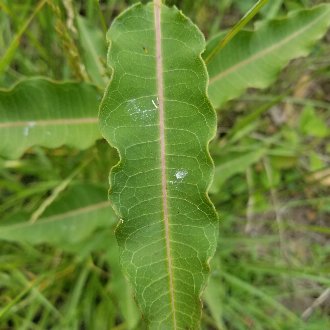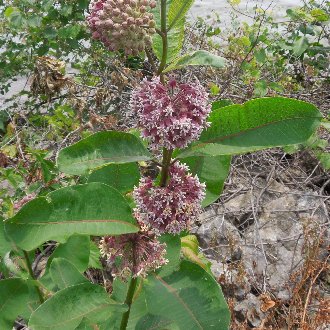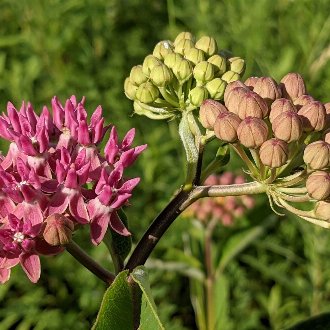Common Milkweed vs Purple Milkweed
Although these plants average different bloom colors, they are otherwise quite similar and can be hard to tell apart, especially early in the season. Even some blooming plants can be hard to distinguish, due to a high variation in bloom color in each species. Common milkweed is wider-ranging and occurs in a broader variety of disturbed habitats, whereas purple milkweed is rarer and more restricted to intact natural areas.
Common Milkweed (Asclepias syriaca) | Purple Milkweed (Asclepias purpurascens) |
A sun-loving rhizomatous perennial native to northeastern North America, best known for being a preferred host of the Monarch butterfly. | A showy perennial, native from the central U.S. through the northeast, but locally uncommon and endangered in parts of its range. Often found in oak savannas and dry oak forests. |
Flowers vary in color from dull, washed out pink to reddish-purple. Usually paler and less saturated. Photo © , CC BY-SA 4.0. | Flowers vary from pale purple to deep purple. Usually darker and more saturated. Photo © Zihao Wang, CC BY 4.0. |
Leaves have prominent, regular side-veins, and usually less of a webbed appearance between veins. Photo © Alexandra Destria, CC BY 4.0. | Side-veins less prominent, with leaves having more of an irregular, webbed network of veins. Photo © Jeff Clark, CC BY 4.0. |
Seedpods covered in numerous soft, often curved, prickles. Photo © rappman, CC BY 4.0. | Surface of seedpods lacks prickles. Photo © john_hall, CC BY 4.0. |
Leaf margins less likely to be wrinkled or wavy; when they are, waves are usually larger and less numerous, less likely to lead to a wrinkled appearance to the leaf margin. Photo © Andrew Sebastian, CC BY 4.0. | Leaf margins not always wrinkled or wavy, but more likely to be so, and often with more waves per leaf leading to more dramatic wrinkled appearance at the leaf margin. Photo © Jason E. Farabaugh, CC BY 4.0. |
Flower clusters usually occur in the axils of upper leaves. Photo © , CC BY-SA 4.0. | Flower clusters usually occur in groups, at the end of each main stem. Photo © john_hall, CC BY 4.0. |
References & External Resources
These short lists show only links helpful for ID. For a complete list of references and resources also covering other aspects of ecology, visit the links section of the full article on each plant, which is the first entry here.



